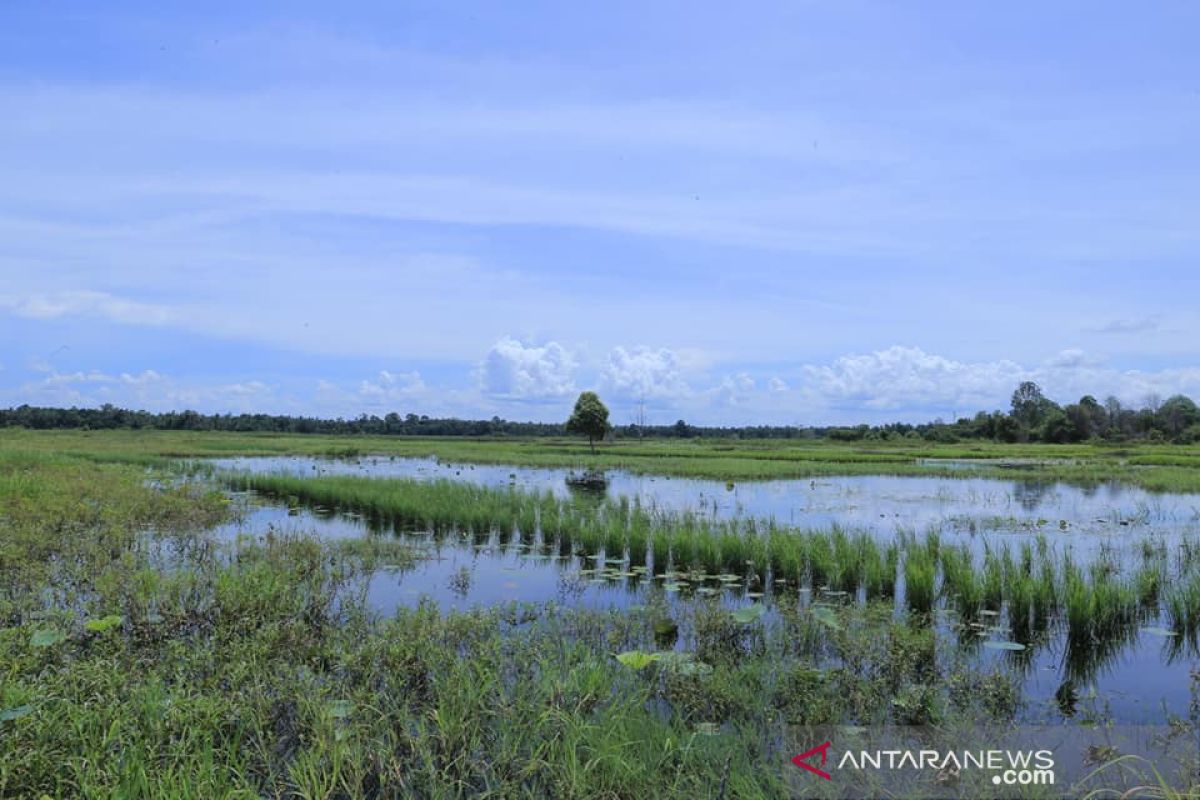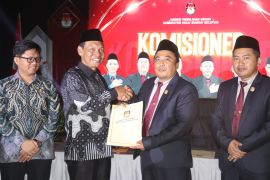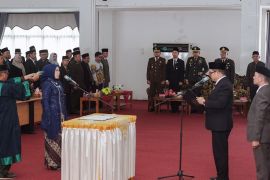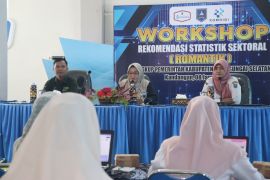Kandangan, S Kalimantan (ANTARA) - The South Hulu Sungai (HSS) Legislative Council (DPRD) Speaker H Akhmad Fahmi, Head of Commission II Kartoyo and several members took to the field to see first hand the submerged rice field in Tebing Tinggi Village, Simpur Sub-district, Monday (March 2, 2020).
Chief of the village Rizahumaini said, approximately 100 hectares of paddy field area cannot be planted. Not only farmers in his village, but farmers from several other villages cannot either due to the height of water soaking rice plants.
"Residents have not been able to plant rice since five years ago, because the water is deep and not flow anymore. Once it was dried up, then farmers planted rice, but then the rice planted have been submerged," he told.
He hoped, the coming of DPRD speaker and commission II to the field, with the related agency, to conduct monitoring will result in a solution to the existing problems until farmers could work on their fields again.
One of Poktan Binaan members, Bahriansyah, said the deepest water in his rice field reached 1,5 meter, and paddy plants had been planted were threatened with crop failure.
Several villages whose paddy fields affected including Tebing Tinggi, Tambingkar, Sirih Hulu, Sirih Hilir, and Garunggang.
Read also: Deputy regent handles the anxiety about Amandit River's condition
Kartoyo said, his party had agreed with the related agency to conduct re-survey because technically it is still not known where the river flow and what was the exact cause of the submerged rice fields.
"After the technical team conducts a survey, we will hold a meeting to take a step together with the related government working unit (SKPD), such as Agriculture Agency and Public Works and Spatial Agency (PUTR)," he said.
Head of the HSS Agriculture Agency Muhammad Noor said the agency will follow up the farmers' reports that they cannot plant rice, because their plant will be submerged. The agency will form a team to implement a survey to identify the problem.
Head of PUTR Agency Tedy Sutedjo acknowledged there was inundation at the farmers' paddy fields. But some tributaries that should flow to the main river, instead the water flow reversed to the tributary, finally water entered the paddy field and caused inundation.
"Later, we will see the result of the survey. If there is something blocking or silting, we will normalize the river, both in the tributaries and in the main river," he said.
Read also: HSS hosts mentoring on Risk-Based Monitoring Plan
Read also: Tanuhi hot spring to attract more visitors










